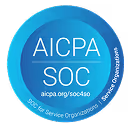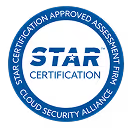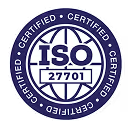'The key is not to prioritize what's on your schedule, but to schedule your priorities.’ -Stephen Covey.
This couldn’t be more relevant to resource utilization. Professional services are about having a skilled team and ensuring that every task and person is aligned with your top priorities. When resources are strategically allocated, you’re not just getting things done—you’re getting the right things done efficiently and on time.Resource utilization encompasses how effectively resources are used in executing tasks and projects. It is integral to maximizing productivity and minimizing waste, directly impacting a company's profitability and operational success. This comprehensive guide explores the various aspects of resource utilization, its significance, and strategies to optimize it effectively.
In this article
- What is resource utilization?
- Why is Resource Utilization Crucial?
- Understanding Resource Utilization, Resource Allocation, and Billable Utilization
- How Is Resource Utilization Calculated?
- Why Is It Important to Calculate Resource Utilization?
- What are the factors that influence resource utilization?
- What Is the Optimal Level of Resource Utilization?
- Best Practices for Optimal Resource Utilization
- Five Strategies to Enhance Resource Utilization
- What are the benefits of resource utilization?
- Key Do’s and Don’ts
- FAQ'S
What is resource utilization?
Resource utilization refers to managing and allocating resources, such as personnel, equipment, and time, to maximize operational efficiency and productivity. These resources include human capital, machinery, technology, financial assets, and time.
Imagine having a talented team, but only some are engaged in actual projects, while others are underutilized or overburdened. This can lead to a host of problems, including burnout or missed opportunities. The goal of resource utilization is to maintain a balance such that every resource is being used to its full potential without being overstrained.
It's a dynamic process that requires constant monitoring and adjustment, as the needs and priorities of a project or organization can shift rapidly. Proper resource utilization ensures that human skills are appropriately matched to tasks, equipment is used efficiently, and time is managed wisely. Getting this balance right can be the difference between a flourishing team and one that struggles to meet its goals. Ultimately, this practice increases productivity, cost savings, improved project outcomes, and happier, more satisfied teams.
Why is resource utilization crucial?
1. Optimizing resource utilization can lead to significant cost savings. When resources are used efficiently, businesses can minimize waste, reduce overhead costs, and improve their bottom line. This is especially important in competitive markets where margins can be thin, and efficient resource use can make the difference between profit and loss.
2. Efficient resource utilization enhances productivity. By ensuring that resources are available and used effectively, companies can maximize output without additional investment. This streamlined approach allows for meeting production targets and fulfilling customer demands promptly, which can improve customer satisfaction and drive repeat business.
3. Resource utilization is a cornerstone of operational excellence, offering benefits in cost management, productivity enhancement, and sustainability. Businesses prioritizing efficient resource use are better positioned to achieve long-term success and maintain a competitive edge.
Understanding resource utilization, resource allocation, and billable utilization
Companies are always looking for better ways to make the most of what they have: their people, money, or time. Understanding efficiently managing resources can significantly boost a company's productivity and profit. This involves clearly grasping resource utilization, resource allocation, and billable utilization. By exploring these key areas, businesses can make smarter decisions and work more effectively. Here's a closer look at each of these concepts.
Resource utilization vs. Resource allocation
While resource utilization and resource allocation are closely related, they serve different functions within project management. Resource allocation involves assigning available resources to specific tasks or projects based on need and priority. The planning phase is where resources are distributed according to strategic objectives. In contrast, resource utilization focuses on monitoring and ensuring that these allocated resources are effectively and efficiently used post-assignment. Essentially, allocation is the "plan," whereas utilization is the "execution."
Resource Utilization vs. Billable utilization
Billable utilization specifically applies to service industries, referring to the percentage of time spent by billable resources (such as consultants or freelancers) on client work that can be charged to clients. While resource utilization considers all resources and activities within an organization, billable utilization narrows this focus to income-generating activities directly linked to revenue. Both are critical for operational efficiency but serve distinct roles aligned with different organizational outcomes.
How is resource utilization calculated?
Calculating resource utilization involves measuring the amount of time a resource spends on effective work relative to their available time. A common resource utilization formula used is:
{Resource Utilization} = [{Actual Work Hours}/{Available Work Hours}] x 100
Where:
- Actual Work Hours are the hours the resource actually worked on productive tasks.
- Available Work Hours are the total hours a resource is available to work, excluding breaks, holidays, etc.
This calculation provides valuable insights into how effectively resources are being used within an organization.
Why is it Important to calculate resource utilization?
Here are some reasons as to why calculating resource utilization is important.
1. Optimizing efficiency: Understanding how resources are utilized helps businesses and organizations optimize their processes to enhance efficiency. Identifying areas where resources are underutilized makes it possible to redistribute them to areas of higher demand, ensuring optimal performance.
2. Cost management: Accurate calculation of resource utilization can lead to better cost management. It allows organizations to identify wasteful practices and reduce unnecessary expenses, leading to significant cost savings over time.
3. Capacity planning: Knowing the extent to which resources are being utilized is essential for effective capacity planning. It helps in forecasting future resource needs based on current usage trends, thus preventing bottlenecks and ensuring that the organization can meet future demand without overcommitting resources.
4. Performance measurement: Calculating resource utilization helps in measuring the performance of different departments and team members. It provides managers with valuable insights into productivity levels, helping them to make informed decisions about where improvements are needed.
5. Sustainability and environmental impact: Organizations can reduce their environmental footprint by closely monitoring and optimizing resource usage. Efficient resource utilization is a step toward sustainable practices, allowing companies to consume less and minimize waste.
6. Strategic planning: Resource utilization data supports strategic planning by offering a clear picture of current capabilities and limitations. It informs decision-makers about when and where to invest in additional resources or technology to achieve long-term goals.
What are the factors that influence resource utilization?
Several factors can impact how well resources are used, determining an organization's overall productivity and efficiency. Understanding these factors can help businesses identify areas for improvement and optimize their resource management strategies. Here are the key factors that influence resource utilization:
1. Resource availability: Fluctuations in resource availability, influenced by factors like leave schedules or equipment downtime, affect utilization.
2. Skill level and expertise: Resources with higher skills may be deployed differently, influencing utilization rates based on task complexity.
3. Project complexity: The complexity and timeline of a project impact how resources are utilized, with more challenging projects requiring more intensive resource deployment.
4. Organizational processes: Inefficient processes can hinder resource utilization by creating bottlenecks or unnecessary steps in task completion.
5. Technology and tools: The availability and effectiveness of tools and technology can significantly impact resource efficiency and productivity.
What is the optimal level of resource utilization?
Optimal resource utilization is a concept that aims to achieve the most efficient and effective use of resources within an organization or system. It involves striking a balance between having too few resources, which can cause bottlenecks, and having too many, which can lead to waste and increased costs. The goal is to align resource availability with demand without compromising quality or overtaxing assets and personnel.
Determining the optimal level of resource utilization requires a comprehensive understanding of current operations and future needs. It involves evaluating the capacity of physical resources such as machinery, materials, and human resources to ensure they are neither underutilized nor overburdened. This balance is crucial in maintaining productivity, reducing unnecessary expenses, and optimizing operational performance.
The optimal level of resource utilization often depends on the industry and specific organizational goals but typically lies within the 70-85% range. This range allows for flexibility, providing leeway for unexpected demands, employee development, and the inclusion of contingency buffers. Over 85% utilization could indicate resource strain, leading to potential burnout, while under 70% may suggest inefficiencies or resource wastage.
In practice, optimal resource utilization can be supported by techniques like demand forecasting, capacity planning, and continuous monitoring. Employing technologies such as data analytics and project management tools can also help assess resource needs accurately and make informed decisions.
Best practices for optimal resource utilization
Achieving optimal resource utilization is essential for maximizing efficiency and driving business success. By leveraging best practices, organizations can effectively manage their resources, minimize waste, and enhance overall productivity. Here are some key best practices to help ensure optimal resource utilization:
1. Achieve full insight into future resource availability:
To optimize resource utilization, organizations must obtain comprehensive visibility into the current and future availability of their resources. This involves using resource management software to track resource schedules, availability, and capacity, ensuring informed decision-making regarding resource allocation.
2. Creating a project plan for accurate resource demand forecasting:
A thorough project plan includes not only tasks and timelines but also a clear understanding of required resources. By forecasting resource demand accurately, organizations can plan staffing and equipment needs more effectively, preventing resource shortages or overcapacity.
3. Ensure effective resource allocation to boost productivity:
Allocating resources effectively requires understanding the skills and expertise of the workforce. By aligning the right resources with the tasks that best match their skill sets, productivity, and efficiency are maximized.
4. Apply the appropriate optimization techniques:
Utilization of optimization techniques, such as agile methodologies or lean management, can help streamline processes and enhance resource utilization. These techniques focus on improving flow efficiency and enhancing value creation.
Five strategies to enhance resource utilization
Improving resource utilization is vital for any organization looking to maximize efficiency and achieve its goals. Here are five strategies that can significantly enhance resource utilization:
1. Conduct regular audits: Regular audits help identify underutilized resources and areas of waste. By thoroughly examining current resource allocation and usage patterns, organizations can make informed decisions about reallocating or discontinuing unnecessary resources.
2. Implement a resource management tool: Leveraging technology can streamline resource allocation and scheduling. Resource management software provides a centralized platform to track resource availability, usage, and capacity. This facilitates optimal resource distribution based on real-time data, reducing the likelihood of bottlenecks or underuse.
3. Enhance employee training: Well-trained employees utilize resources more effectively. Investing in comprehensive training programs ensures that staff possess the necessary skills and knowledge to maximize the tools and resources, resulting in improved productivity and efficiency.
4. Encourage cross-departmental collaboration: Resources are often siloed within departments. Fostering inter-departmental communication and collaboration can lead to shared use of resources, reducing redundancy and optimizing overall utilization.
5. Set clear objectives and KPIs: Having well-defined goals and key performance indicators (KPIs) ensures that resource utilization aligns with organizational objectives. Regularly reviewing performance against these benchmarks allows for timely adjustments in resource allocation to support strategic goals.
What are the benefits of resource utilization?
Understanding and implementing effective resource utilization strategies can benefit businesses and organizations.
1. Optimizing resource utilization can lead to significant cost savings. Organizations can minimize waste, reduce excess expenses, and maximize the return on investment by ensuring that resources are used efficiently. This is particularly important in industries where resources are limited or costly.
2. Effective resource utilization enhances productivity. Strategically distributing resources to prevent both underutilization and overburdening allows employees to work more efficiently, which enhances overall performance. This can result in higher-quality output and faster project completion times.
3. Resource utilization also supports better decision-making and strategic planning. With a clear understanding of resource availability and capacity, managers can make informed decisions about project timelines, budgeting, and potential resource reallocations. This insight enables businesses to identify potential constraints and plan accordingly, reducing the risk of project delays or interruptions.
4. Improved resource utilization can contribute to greater organizational flexibility and agility. Businesses that effectively use their resources are better positioned to adapt to changing market conditions and seize new opportunities, fostering long-term growth and competitiveness.
Key Do’s and Don’ts
Effective resource utilization is integral to organizational success. Here are some key do’s and don’ts:
- Do employ technology and PSA tools to gain visibility into resource availability and utilization.
- Do regularly assess and analyze resource usage to identify areas of improvement.
- Don’t overburden resources, which can lead to burnout and reduced productivity.
- Do maintain flexibility in resource allocation to adapt to changing needs.
- Don’t neglect the development of resource skills and capabilities through training programs.
How Rocketlane can help you with managing your resources
Resource utilization is the backbone of successful project delivery, and Rocketlane is designed to help you master it.
Rocketlane PSA is not just a tool for resource management—it’s a strategic solution that empowers you to optimize your team’s capacity, minimize idle time, and ensure resources are deployed effectively across all projects.
With Rocketlane’s advanced resource utilization features, you can:
- Maximize team efficiency: Get a clear view of who is available, who’s overbooked, and who can take on additional work to ensure no one is under or over-utilized.
- Improve workload balance: Allocate tasks based on capacity and skill, ensuring that each team member is optimally assigned and no one is stretched too thin.
- Monitor utilization in real time: Track resource utilization across multiple projects in real-time, helping you make quick adjustments and prevent burnout.
- Enhance forecasting accuracy: Use historical data to predict future workload and staffing needs, helping you stay ahead of demand and avoid resource shortages.
- Optimize billable hours: Ensure that your resources are focused on the most value-driven activities, boosting the number of billable hours and improving overall profitability.
Rocketlane gives you the power to manage your resources effectively, ensuring your team is working on the right tasks at the right time. Whether handling multiple projects or dealing with fluctuating demand, Rocketlane’s robust resource utilization tools provide the insights and control you need to stay on top.
Experience smarter, more efficient resource management with Rocketlane.
|Book a demo today and see how you can drive better results with optimized resource management!
{{demo}}
FAQ's
1. What is a good resource utilization rate?
A 70-85% utilization rate is generally considered optimal, balancing efficiency and flexibility.
2. Why is flexibility important in resource allocation?
Flexibility allows businesses to quickly respond to changes in demand, priorities, and project requirements, optimizing resource deployment.
3. How often should resource utilization be analyzed?
Regular analysis, such as monthly or quarterly reviews, is recommended to keep operations efficient and resource allocation aligned with organizational goals.
4. How can the overutilization of resources be prevented?
Maintaining balance in workload distribution, implementing effective scheduling practices, and regularly monitoring resource deployment.
5. What is the impact of poor resource utilization on a project?
Poor resource utilization can lead to overworked resources, increased costs, missed deadlines, lower quality outcomes, decreased employee satisfaction and morale, and ultimately, failure to achieve project goals.
.webp)











